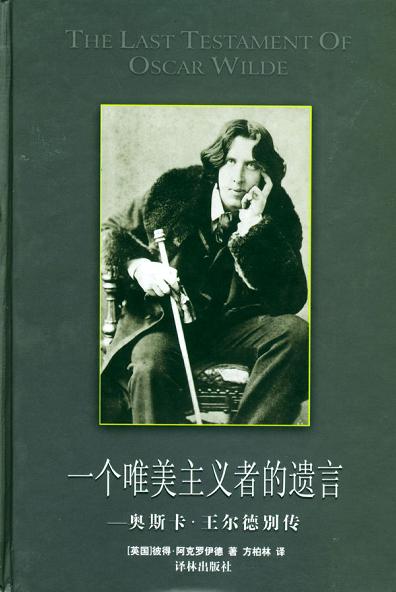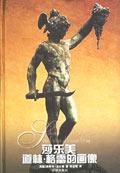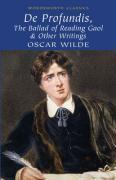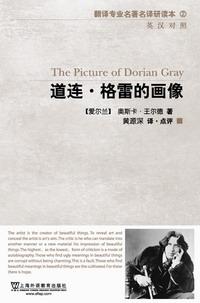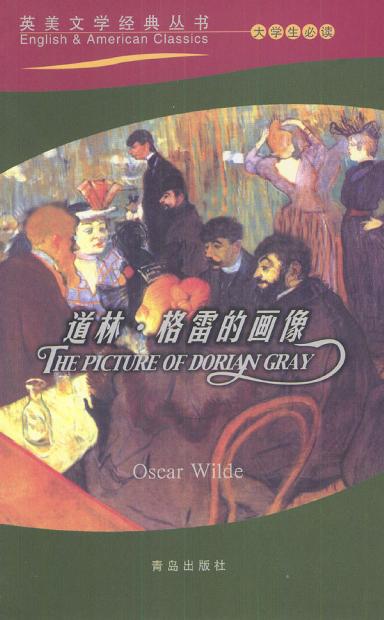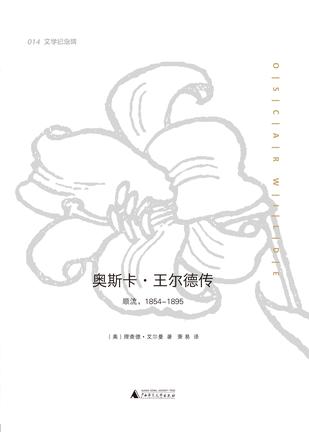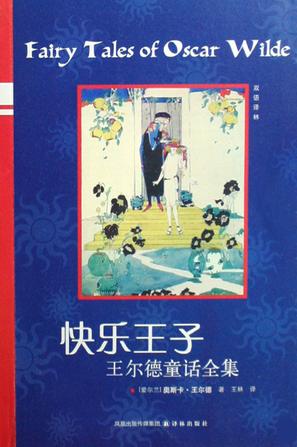欢迎来到相识电子书!
标签:王尔德
-
夜莺与玫瑰
《夜莺与玫瑰》是王尔德所著的童话作品经典选集,共收录了他的《夜莺与玫瑰》《幸福王子》《巨人的花园》《忠实的朋友》《驰名的火箭》和《星孩儿》七部脍炙人口的经典作品。这些作品,由民国时期著名的大才女林徽因翻译而成。林徽因的文字优美自然、富有灵气,充满了恬静的女性美。译文后面并附录了完整的英文原文,读者可以感受英国天才作家王尔德的语言魅力。 -
一个唯美主义者的遗言
奥斯卡·王尔德(1854—1900),出生于爱尔兰,戏剧家、小说家、童话家和诗人,英国唯美主义文学的代表人物,“为艺术而艺术”的倡导者之一。他写出了维多利亚时期最好的英国舞台剧,如《温德密尔夫人的扇子》、《无足轻重的女人》、《理想的丈夫》等。他的长篇小说《道林·格雷的画像》则是一部探讨美与心灵之间关系的重要作品。他创作的童话虽然数量不多,却使他跻身于世界最优秀童话家之列。他的诗充满了隐喻,形象丰富,音律优美,堪称最美的英语作品之一。王尔德的作品经过一个多世纪的岁月洗礼,反而吸引了越来越多的关注目光,让更多的人为之叹服,为之沉醉。 王尔德的私生活同样是一个饶有趣味的话题。他以放荡不羁、奇装异服闻名,而他的性取向更为人所津津乐道。他蔑视伦理道德、艺术至上的主张不可避免地激怒了正统的上流社会,终于弄到不可收拾的地步。他与同性密友道格拉斯的父亲——昆斯伯里侯爵对簿公堂,尽管他为自己所做的辩护感动了许多人,但他还是没能逃脱被审判的命运,锒铛入狱。两年监狱生活之后,他避人耳目,悄悄来到巴黎,在贫病交加中度过自己最后的岁月,辞世时年仅46岁。《一个唯美主义者的遗言——奥斯卡·王尔德别传》正是用王尔德一生最后三个月的日记的方式,再现了他人生最后的不为人知的阶段。 本书拟为王尔德自1900年8月9日到1900年11月30日之间的日记,以王尔德自己的口吻,描绘了王尔德最后的生活,回顾他的跌宕起伏、毁誉参半的一生。在这三个月的“伪日记”中,作者彼得·阿克罗伊德以罕见的精巧方式,串起了王尔德的一生——少年时代、全盛时期、巨大成就和道德的深渊,仿佛他成为奥斯卡·王尔德,与之一起挥洒天才,享受荣耀,涉足险恶和遭世人唾弃,然后在贫病中冷静地回顾自己的一生;又时而跳出那个时代,站在后人的角度评价这个才子。 无疑,这是一个绝妙的构思。每一个喜欢王尔德的人,恐怕都想知道他在最后的岁月里到底在干什么,在想什么?都希望能够亲身体验他唯美的危险的生活,用某种方式表达对他的机智、对他的才华的敬仰。然而这个题材不仅需要传记作家的严谨,还需要有王尔德式的渊博和机智。仿作如果没有自己的灵魂,就只能成为空洞的回音。 英国《暂停》杂志评论道:“王尔德若是在天有灵,肯定希望这本书是他自己写的。”有些赞美过度,但是在追随王尔德的道路上,彼得·阿克罗伊德确实比其他人走得更远,也许也更加成功。 “这些英国人要是没话可说,就摆出不屑一顾的样子,要是没什么可想,就会装出若有所思的神态。”(对英国“正人君子”的嘲讽) “他有‘直抒胸臆’的习惯,却浑然不知根本无胸臆可抒。”(对昆斯伯里侯爵的评价) “圣方济各那样的艺术作风对我毫无吸引力:他们的童贞是太监的童贞,他们的孤独是完全被人看穿的孤独。”(对所谓正统文学的嘲弄) 在书中,这种王尔德式的妙语随处可见,令人惊讶。但作者并不是停留在模仿层面,而是将自己的评价融入其中,如他借王尔德之口总评王尔德的艺术成就: “我是这个时代最伟大的艺术家,我对此毫不怀疑,正如我的悲剧也是这个时代最大的悲剧。在欧洲和美国,我都享有很高的艺术声誉。在英国,我的作品总是巨大的商业成功——我对此并不感到羞耻。……我掌握了各种文学体裁。我把喜剧带回英国舞台,我用我们自己的语言开创了象征戏剧,我为现代读者创造了散文诗。我把批评从实践中分离出来,形成一门独立的学问,我还写出了惟一一部现代意义的英语小说。还有,尽管我把自己的戏剧作为一种本质上属于私人化表达的形式,但我的理想是把戏剧变成生活和艺术交汇的地方,我一直锲而不舍地追寻着这一理想。” 在国内以前出版的关于王尔德的书中,王尔德的私生活遭到了某种刻意的回避,他的审判被说成虚伪的上流社会对天才的嫉妒和攻击。而彼得·阿克罗伊德还他以真实面目,把一个走钢丝的王尔德呈现在世人面前。这个王尔德更加真实、丰满,也更能引起我们的思考。 要想了解一个天才,最好的办法恐怕是跟他到世上走一遭。但愿这本书能带给我们愉快的阅读,感受到一个天才的激情洋溢的人生。 -
The Picture of Dorian Gray
《道林•格雷的画像(Picture of Dorian Gray)》是王尔德的惟一一部小说,也是他美学思想的全面体现,因此已被认为是唯美主义小说中的力作。故事围绕着年轻而又漂亮惊人的道林•格雷展开。俊美的格雷立即激起国家霍华德的艺术想像力并成了画家最喜欢的模特,霍华德为他画的巨幅肖像使格雷意识到自己异常的美。新结识的朋友亨利•华顿勋爵对青春、美丽的赞扬又使他意识到青春易逝,美貌难恒,于是他表示愿用灵魂作交换以保持自己的青春俊美,而让肖像代他承受岁月的痕迹。他的愿望真的奇迹般地实现了,在亨利勋爵的不断影响下,格雷成了新享乐主义的实践者。他爱上了年轻的女演员西北比尔•苇恩,结果他的粗暴导致了西比尔的自杀,对此他不仅不自责,反而把这一悲剧件事件当成浪漫故事。从此追求享乐成了他生活的惟一目标,许多接近他的人也都因为他堕落、放荡的生活方式而变得或声名狼藉或身败名裂。后来他竟然丧心病狂地杀死霍华德并毁尸灭迹。就这样他一直过着双重生活,虽然20年过去了,但他看起来仍然是那个俊美、纯洁的20岁青年,尽管他干尽了腐朽堕落的勾当。最后当他想用刀破坏掉他罪恶的惟一证据——肖像时,刀子却插进了自己的胸膛,而肖像又回复到了它当实初的完美状态。 The Wordsworth Classics covers a huge list of beloved works of literature in English and translations. This growing series is rigorously updated, with scholarly introductions and notes added to new titles. This is a story of moral corruption. A gothic melodrama, it is full of subtle impression and epigram. It touches on many of Wilde's recurring themes, such as the nature and spirit of art, aestheticism and the dangers inherent in it. Amazon.com A lush, cautionary tale of a life of vileness and deception or a loving portrait of the aesthetic impulse run rampant? Why not both? After Basil Hallward paints a beautiful, young man's portrait, his subject's frivolous wish that the picture change and he remain the same comes true. Dorian Gray's picture grows aged and corrupt while he continues to appear fresh and innocent. After he kills a young woman, "as surely as if I had cut her little throat with a knife," Dorian Gray is surprised to find no difference in his vision or surroundings. "The roses are not less lovely for all that. The birds sing just as happily in my garden." As Hallward tries to make sense of his creation, his epigram-happy friend Lord Henry Wotton encourages Dorian in his sensual quest with any number of Wildean paradoxes, including the delightful "When we are happy we are always good, but when we are good we are not always happy." But despite its many languorous pleasures, The Picture of Dorian Gray is an imperfect work. Compared to the two (voyeuristic) older men, Dorian is a bore, and his search for ever new sensations far less fun than the novel's drawing-room discussions. Even more oddly, the moral message of the novel contradicts many of Wilde's supposed aims, not least "no artist has ethical sympathies. An ethical sympathy in an artist is an unpardonable mannerism of style." Nonetheless, the glamour boy gets his just deserts. And Wilde, defending Dorian Gray, had it both ways: "All excess, as well as all renunciation, brings its own punishment." From Booklist Gr. 6-12. For teens who find even steadily paced novels a struggle, the biting but often meandering discussions between Basil and Lord Henry in Wilde's classic can seem overwhelming and pointless. But this version's informative sidebars make the surreal tale of the beautiful young man who never ages one that teens can not only tackle but also begin to relish. When the story advances or twists, Tony Ross' colorful artwork emphasizes Wilde's absurdly witty take on Victorian provincialism. For scenes in which characters discuss aesthetics, sidebar illustrations with helpful captions explain how Wilde's philosophies influenced his characterizations. Even when the sidebars only remotely relate to the story, they provide a clear cultural outline of the mores that resulted in Wilde's public undoing and his untimely death. The supplemental information and illustrations may strike sharp YA readers as amusing or interesting, but they may be the sole reason weaker readers tackle the novel at all. Roger Leslie From School Library Journal Gr 10 Up-"The Whole Story" format provides illustrations and annotations to the classic text. Ross's lively and sophisticated cartoons add interest, and historical information helps readers place the novel in proper context and gives insight into its characters. The problem with this attractive, glossy layout, however, is that the text and the quotes pulled from it are not always on the same page. Further, some illustrations and notations visually cut into the narrative and may distract readers. For example, a drawing appears on the first page along with the passage, "In the centre of the room, clamped to an upright easel, stood the full-length portrait of a young man of extraordinary personal beauty," but that quote does not appear until the second page of the story. Useful as a supplement to the original novel, but not a replacement for it. Karen Hoth, Marathon Middle/High School, FL From AudioFile This remarkable rendering perfectly captures the spirit and characters of the chilling melodrama that scandalized polite society when first published in 1890. Enthralled with his own physical beauty, Dorian Gray wishes his portrait to grow old while he himself stays young, and Wilde makes it so. Just as the portrait mirrors the ravages of Gray's soul, Petherbridge's narration exudes decadence, hedonism and destruction--every syllable foreshadowing the protagonist's dismal end. The narrator's storytelling and narrative skill are exemplary. R.B.F. The Merriam-Webster Encyclopedia of Literature Moral fantasy novel by Oscar Wilde, published in an early form in Lippincott's Magazine in 1890. The novel had six additional chapters when it appeared in book form in 1891. An archetypal tale of a young man who purchases eternal youth at the expense of his soul, the novel was a romantic exposition of Wilde's Aestheticism. Dorian Gray is a wealthy Englishman who gradually sinks into a life of dissipation and crime. Despite his unhealthy behavior, his physical appearance remains youthful and unmarked by dissolution. Instead, a portrait of himself catalogues every evil deed by turning his once handsome features into a hideous mask. When Gray destroys the painting, his face turns into a human replica of the portrait, and he dies.Gray's final negation, "ugliness is the only reality," neatly summarizes Wilde's Aestheticism, both his love of the beautiful and his fascination with the profane. Publication of the novel scandalized Victorian England, and The Picture of Dorian Gray was used as evidence against Wilde in his 1895 trial for homosexuality. The novel became a classic of English literature. About Author Oscar Wilde was born in Dublin in 1854. His father was a celebrated surgeon, his mother a supporter of Irish independence who presided over literary salons in Ireland and England. Although his brilliance as a classicist at Dublin's Trinity College won him a scholarship to Magdalen College, Oxford, Wilde failed in his attempts at an academic career. Instead he set his sights on the literary and artistic worlds of London. Fusing the influences of Ruskin, the Pre-Raphaelites, Walter Pater, and Gautier's l'art pour l'art, he made himself the most visible manifestation of the Aesthetic movement; by 1881 a burlesque of Wilde provided the protagonist for the Gilbert and Sullivan operetta Patience. It was to exploit the popularity of the operetta, in fact, that the producer D'Oyly Carte underwrote Wilde's immensely successful lecture tour of America. Married in 1884 to Constance Lloyd, Wilde worked briefly as a magazine editor while publishing poetry, plays, fairy tales, and essays. The Picture of Dorian Gray was commissioned by J. M. Stoddardt, the Philadelphia publisher of Lippincott's Monthly Magazine. It appeared in the July 1890 issue and immediately gained a certain notoriety for being 'mawkish and nauseous,' 'unclean,' 'effeminate,' and 'contaminating.' When it was published as a book the following year, Wilde greatly revised and expanded the text, filling it out with a melodramatic subplot and adding a preface that defended his aesthetic philosophy. As for the book's value as autobiography, Wilde noted in a letter that the main characters are in different ways reflections of him: 'Basil Hallward is what I think I am: Lord Henry what the world thinks me: Dorian what I would like to be--in other ages, perhaps.' In the early nineties, Wilde was at the center of an artistic milieu characterized by The Yellow Book, The Rhymers' Club, and the art of Aubrey Beardsley. Banned from performance in England, his poetic drama Salome (1892) was illustrated by Beardsley and finally produced in Paris in 1896. At the same time, Wilde achieved success as a popular playwright, writing in rapid succession Lady Windermere's Fan, A Woman of No Importance, An Ideal Husband, and The Importance of Being Earnest. In 1895, two of his plays were on the London stage simultaneously, and he was acknowledged as a pivotal figure in English literary life, admired for his wit and eloquence. Since at least the mid-1880s, however, Wilde had lived a sexual double life, and in 1893 he distanced himself from his family by taking rooms at the Savoy Hotel. He had by then embarked on a passionate relationship with the considerably younger Lord Alfred Douglas, the English translator of Salome, whom he had met the year after he wrote The Picture of Dorian Gray. In March 1895, Wilde undertook a libel action against the Marquess of Queensberry, Lord Alfred's father, who had denounced Wilde as a 'somdomite' (sic). Wilde withdrew the suit following damaging cross-examination by the marquess's defense attorney, a former classmate of Wilde's. (Question: 'Have you ever adored a young man madly?' Answer: 'I have never given adoration to anybody but myself.') Shortly thereafter, Wilde was arrested for homosexual offenses and underwent two trials before being sentenced to hard labor at Wandsworth Prison and Reading Gaol. A long recriminatory letter to Douglas written while in prison was eventually published as De Profundis. Released in 1897, Wilde left for France under the name Sebastian Melmoth, a pseudonym combining a martyred saint with a Faustian hero of Gothic romance. A poem based on his prison experience, The Ballad of Reading Gaol, was published in 1898. His health destroyed, and bankrupted by his legal expenses, Wilde lived in Paris for three years, making a conversion to Roman Catholicism just before his death in November 1900. He is buried in the cemetery of Pere Lachaise. 点击链接进入中文版: 道连•葛雷的画像 -
De Profundis
在线阅读本书 De Profundis is Wilde's eloquent and bitter reproach from prison to his lover, Lord Alfred Douglas. He contrasts his behaviour with that of his close friend Robert Ross who became Wilde's literary executor. The Ballad of Reading Gaol is a deeply moving and characteristically generous poem on the horrors of prison life, which was published anonymously in 1898. This collection also includes the essay The Soul of Man under Socialism and two of his Platonic dialogues, The Decay of Lying and The Critic as Artist. -
快乐王子
《快乐王子:王尔德童话全集》为彩色插图本,作品包括《快乐王子》、《自私的巨人》、《年轻的国王》、《公主的生日》、《忠实的朋友》等。 -
一个唯美主义者的遗言
谁能不喜欢王尔德呢?这部作品被英国人誉为鬼斧神工之作。鬼才作家彼得•阿克罗伊德以王尔德自己的口吻,讲述王尔德最后三个月的故事,融会贯通,纵横捭阖,令人拍案叫绝。 本书是英国著名作家彼得•艾克罗伊德以王尔德自己口吻写的王尔德自传。王尔德因同性恋被关雷丁监狱两年,本书写了王尔德自雷丁监狱出来之后在巴黎的生活,并回顾他的一生成败。《泰晤士报》评论说:“这本书追溯了文学史上最吸引人的一位人物起伏跌宕的一生,书中王尔德式的机智、聪明和悲剧俯拾皆是。这本书在刻画这位不寻常的人物同时,成功刻画了他的生活、时代和个性。” -
这是我最好的爱
《这是我最好的爱:王尔德经典童话选》内容简介:王尔德的童话被誉为“世界上最美的童话”。在他的每部作品中,都有一个因为“至爱”而变得“至美”的形象:乐善好施的快乐王子、用鲜血培育红玫瑰的夜莺、把花园分享给孩子们的巨人……故事“有一种稀有的、丰富的想象,中间贯穿着微妙的哲学”,散发浓厚的理想主义色彩。孩子从中可以读出天真、淳朴和美好,成人可以感受真善美,体会美丽童话背后凄婉唯美的实质。 《这是我最好的爱:王尔德经典童话选》收录了天才作家王尔德最著名的两部童话《快乐王子集》和《石榴之家》,其一生创作的9篇童话如《快乐王子》、《夜莺与玫瑰》、《自私的巨人》等,均按照英文原版完整收录。著名文学家巴金典雅、丰丽的译文,让王尔德的童话焕发别样光彩。 “真正美的东西都是让人忧伤的”,王尔德的童话中有对底层民众怜悯、贪婪人性的批判、无暇童心的颂扬、人间真善美的描摹,走进他的世界有欢愉、伤感和难以言状的怦然心动,如同和灵魂深处的我们自己狭路相逢。他笔下爱的九种姿态,甜蜜又苦涩,坚硬而透明,温柔且执著,带领我们穿越暗夜的星光,让纤细柔软的灵魂在高处飞扬。 《这是我最好的爱:王尔德经典童话选》适合以下读者: 1.对美敏锐,喜欢浪漫,向往纯真世界、怀揣赤子之心的你。 2.生活忙碌、精神疲惫,想要在工作闲暇之余寻找一片心灵悦活森林的你。 3.热爱孩子的父亲或母亲,睡前读上一篇,为孩子送去最美的星空和最纯净的花园; 4.羞于表达情感,想要给恋人、朋友、同学分享内心感动的你,用这本精美的小书当成礼物赠送,会让心目中的王子∕公主看到你那真诚善良的心。 5.纯正英式英语的爱好、学习者,翻开本书将看到“世界上最美丽的英文童话集”。 -
快乐王子集
一百多年来,世界各国一代 又一代的孩子聆听了关于快乐王 子的美丽动人的故事。“对贫苦 人的同情和作品中表现出来的崇 高灵魂”,“那富于音乐性的调 子”,“十分丰富华丽的词藻” (皆巴金语),不知感动了多少 读者,使他们受到真正的艺术熏 陶。倡导“为艺术而艺术”的唯 美主义者王尔德的这部传世童话 集字字珠玑,精妙绝伦。而巴金 先生的译文亦绘影绘声,一字千 金。它把人带入一个奇妙的世界, 教人以真善美。 -
道连·格雷的画像
艺术高于生活、艺术反映现实的唯美主义思想,在《道连·格雷的画像》中得到了充分的体现。 -
奥斯卡·王尔德自传
王尔德生于都柏林的一个家世卓越的家庭,是家中的次子,全名为:奥斯卡·芬葛·欧佛雷泰·威尔斯·王尔德(Oscar Fingal O’Flahertie Wills Wilde)。他的父亲威廉姆·王尔德爵士是一个外科医生,他的母亲是一位詩人與作家。王尔德是一个优秀的学生,他获得了都柏林圣三一学院(Trinity College)的奖学金,1874年,他进入牛津大学迈格德林学院(Magdalen College)学习。在牛津,王尔德受到了沃尔特·佩特及约翰·拉斯金的审美影响,并接触了新黑格尔派哲学、达尔文进化论和先拉斐尔派的作品,这为他之后成为唯美主义先锋作家确立了方向。当时,虽然年轻的王尔德还没有获得一个文学奖项,但服装惹眼、谈吐机智、特立独行的他在社会上已经小有名气,一些杂志甚至刊登着讽刺他的文章。 1882年,王尔德在美国作了一个精彩的巡回讲座,两年后他與 Constance Lloyd 成婚,兩名兒子 Cyril 與 Vyvyan 亦分別在1885年與1886年出生。1887年王尔德成为一家妇女杂志的執行總编辑,那上面发表着他的一些小说、评论和诗。王尔德的作品以其词藻华美、立意新颖和观点鲜明闻名,他的第一本小说道林·格雷的画像发表于1891年,之后他又发表了散文《社会主义下人的灵魂》,这两部作品都十分成功,但真正为王尔德赢得名誉的是他的戏剧作品。可以说他的每一部戏剧作品都受着热烈的欢迎,有一个时期,伦敦的舞台上竟同时上演着他的三部作品。 维多利亚女王时代的英国上流社会市侩腐朽,新旧风尚的冲突激烈,王尔德的自由作风和大胆的政治作风很快使他成为了这场冲突的牺牲品。1895年,昆斯拜瑞侯爵(Marquess of Queensberry)因儿子阿尔弗瑞德·道格拉斯(Lord Alfred 'Bosie' Douglas)與王爾德交往而令到父子不和,并公然斥责王尔德是一个 "somdomite"。对此,愤怒的阿尔弗瑞德叫王尔德立刻上诉告侯爵败坏他的名誉,可惜王爾德不但上诉失败,更被反告曾“commit acts of gross indecency”。根据当时英国苛刻的刑事法,王尔德被判有罪,在瑞丁和本顿维尔监狱服了两年苦役。这两年,王尔德停止了戏剧创作,而构思了诗作《瑞丁监狱之歌》和忏悔录《深渊书简》,在这两部作品中已很难寻得唯美主义的影响。在王爾德服刑期間,Constance 與兩個孩子改姓為 Holland 兼移居意大利,而他大多数的朋友则对他避之唯恐不及,当中只有寥寥數人如戏剧作家萧伯纳仍挺身维护他。 1897年获释后,王爾德立刻动身前往巴黎,对于英国他失望透顶,不再有丝毫留恋。其後他為了兩名孩子曾嘗試與 Constance 復合,但阿尔弗瑞德亦同時表示想與王爾德重歸如好,最後王爾德放棄兩名孩子而選擇了阿尔弗瑞德。王爾德在以假名居住法国期间完成并出版了《瑞丁监狱之歌》,之后與阿尔弗瑞德同游意大利,但幾個月後,兩人再次分手。1900年王爾德終於在好友 Robert 'Robbie' Ross 幫助下改信天主教,在同年11月30日因病于巴黎的亚尔沙斯旅馆(H?tel d’Alsace)去世,享年46岁,死時只有 Robbie 與另一朋友陪伴。 [编辑]代表作品 Missing image Wildfilm.jpg Wildfilm [编辑]文作 道林·格雷的画像(The Picture of Dorian Gray,1891年) 《社会主义下人的灵魂》(The Soul of Man Under Socialism,1891年) 《深渊书简》(De Profundis,1897年。原本是作者写给道格拉斯的一封长信,1905年作者死后出版) [编辑]童话集 《快乐王子和其他故事》(The Happy Prince and Other Tales,1888年) 《石榴屋》(A House of Pomegranates,1891年) [编辑]诗作 詩(王爾德作品)(Poems,1881年) 《斯芬克斯》(Sphinx,1894年) 《瑞丁监狱之歌》(The Ballad of Reading Gaol,1898年) (王尔德的诗作充满了夸张的隐喻的古代文字和古代俚谣的音律,对于感官、情欲的描写十分隐晦,体现了唯美主义诗歌的特征) [编辑]戏剧剧本 薇拉(Vera,1880年) 《温德密尔夫人的扇子》(Lady Windermere`s Fan,1892年) 《帕都瓦公爵夫人》(The Duchess of Padua,1893年) 莎乐美(Salomé,1893年)(原著用法语写成) 《无足轻重的女人》(A Woman of No Importance,1892年)(1893年Theatre Royal Haymarket首演) 《真诚最要紧》(The Importance of Being Earnest,1895年) 《理想的丈夫》(An Ideal Husband,1895年) [编辑]王尔德作品在中国的传播 建筑师王大闳先生将《道林·格雷的画像》译写为《杜连魁》,场景亦转换为当时的台北。 -
道连•格雷的画像
《道连•格雷的画像》是王尔德的代表作,讲述了美貌惊人的少年道连•格雷在朋友亨利勋爵的诱导下,个性由单纯变为世故,灵魂由纯洁转为污秽,最后走向毁灭的故事。 唯美主义理论的大胆实践、寓意深刻的奇特构思、隐形的同性恋题材、雄辩而富有哲理的对话、似是而非的悖论等,构成了这部不朽的经典作品不同于其他小说的魅力。 -
道林·格雷的画像
《道林·格雷的画像》是王尔德的惟一一部小说,也是他美学思想的全面体现,因此已被认为是唯美主义小说中的力作。故事围绕着年轻而又漂亮惊人的道林·格雷展开。俊美的格雷立即激起国家霍华德的艺术想像力并成了画家最喜欢的模特,霍华德为他画的巨幅肖像使格雷意识到自己异常的美。新结识的朋友亨利·华顿勋爵对青春、美丽的赞扬又使他意识到青春易逝,美貌难恒,于是他表示愿用灵魂作交换以保持自己的青春俊美,而让肖像代他承受岁月的痕迹。他的愿望真的奇迹般地实现了,在亨利勋爵的不断影响下,格雷成了新享乐主义的实践者。他爱上了年轻的女演员西北比尔·苇恩,结果他的粗暴导致了西比尔的自杀,对此他不仅不自责,反而把这一悲剧件事件当成浪漫故事。从此追求享乐成了他生活的惟一目标,许多接近他的人也都因为他堕落、放荡的生活方式而变得或声名狼藉或身败名裂。后来他竟然丧心病狂地杀死霍华德并毁尸灭迹。就这样他一直过着双重生活,虽然20年过去了,但他看起来仍然是那个俊美、纯洁的20岁青年,尽管他干尽了腐朽堕落的勾当。最后当他想用刀破坏掉他罪恶的惟一证据——肖像时,刀子却插进了自己的胸膛,而肖像又回复到了它当实初的完美状态。 -
王尔德读本
《王尔德读本》收入作家最有代表性的小说、戏剧、散文作品,如《快乐王子》《莎乐美》《认真的重要》《理想丈夫》《雷丁监狱之歌》《道连•格雷的画像》等,较全面地展现了他的创作特色和文学价值。《王尔德读本》作者生于1854年,卒于1900年,是19世纪爱尔兰最伟大的艺术家之一,以其剧作、诗歌、童话和小说闻名于世。王尔德作为唯美主义代表人物,在世界文学史上享有特殊地位,是19世纪80年代美学运动的主力和90年代颓废派运动的先驱。 -
多里安・格雷的画像
一个人的画像是否比他的面孔更多地反映他自己?如果画像是用爱的画笔描绘的,或许它能反映这个人外表以外更多的东西――或许它能反映这个人的内心世界。 我们经常说脸像一本书,能自己讲述故事。当多里安・格雷看到画像中自己的面孔时,便爱上了自己的美貌。任何事物都不能损害他的美貌,任何事物都不能伤害或改变它――爱不能,甚至时间也不能。因此,他切断了他的脸和内心、他的外表和内在世界的联系。他的脸没有改变,总是年轻、漂亮。但是这幅画像――用爱的画笔描绘的画像――却在讲述着真实的故事。它才是真实的多里安・格雷――一天天变老、变丑并满怀恨意。 奥斯卡・王尔德(1854―1900)是爱尔兰最杰出最聪颖的作家。他的剧本和儿童故事,以及《多里安・格雷的画像》虽然是近一百年前的作品,但至今仍受读者喜爱。 -
奥斯卡·王尔德传
关于王尔德的一切都是不同寻常的。在这位十九世纪最令人眼花缭乱,最迷人,也是最离谱的文人身上,我们时代最伟大的传记作家之一理查德•艾尔曼找到了自己最引人瞩目的主角。这部书籍让人们产生了情绪上的共鸣,书中充满真实的风格和对话,其评论性阐述含义微妙,让传主的肖像就此获得耀眼的生命力。 立足于丰富的史实,其中很多资料还是初次问世,又依靠在《莎乐美》、《道林•格雷的画像》、《不可儿戏》和其他作品中发现的传主新面目——艾尔曼揭示了一个更甚于传统形象的王尔德,更伟大也更感人,这个王尔德不但是十九世纪八十年代和九十年代的化身,甚至在今天,他也能以那种撩人的才智挑战我们的假设。这部书籍是传记作家之艺术的巅峰,通过它,以其独特且完整的形象,王尔德又回到了我们当中。 -
快乐王子
如果不是天才作家王尔德,还有谁的作品能唤醒我们沉睡已久的心灵,让我们微笑,动容,垂泪,叹息? 谢拉尔德在写《王尔德传》时说:“在英文世界中,找不出任何童话能跟王尔德写的童话相比,他的文字非常巧妙,故事依着一种稀有的,丰富的想像发展,中间贯穿着微妙的哲学。 就是这样一种珍贵的力量,使用权得王尔德的童话在一百年后的今天读起来,依旧让人无限感动,备受启发。 王尔德是19世纪最伟大的爱尔兰艺术家之一,以其剧作、诗歌、童话和小说名世。在风流才子那颓废唯美、猖狂放浪的表面姿态下,是一颗纯美纯善,永难泯灭的童心。而这可贵童心一经与卓绝才智结合,便诞生了《王尔德童话》。它不仅为作者奠定了文学声名的基石,更成为世界文学宝库中的传世佳作。其语言纯正优美堪称典范,其意境高洁悠远益人心智,值得向每一个童稚未凿的孩子、每一位葆有赤子之心的成人郑重推荐。
热门标签
下载排行榜
- 1 梦的解析:最佳译本
- 2 李鸿章全传
- 3 淡定的智慧
- 4 心理操控术
- 5 哈佛口才课
- 6 俗世奇人
- 7 日瓦戈医生
- 8 笑死你的逻辑学
- 9 历史老师没教过的历史
- 10 1分钟和陌生人成为朋友


